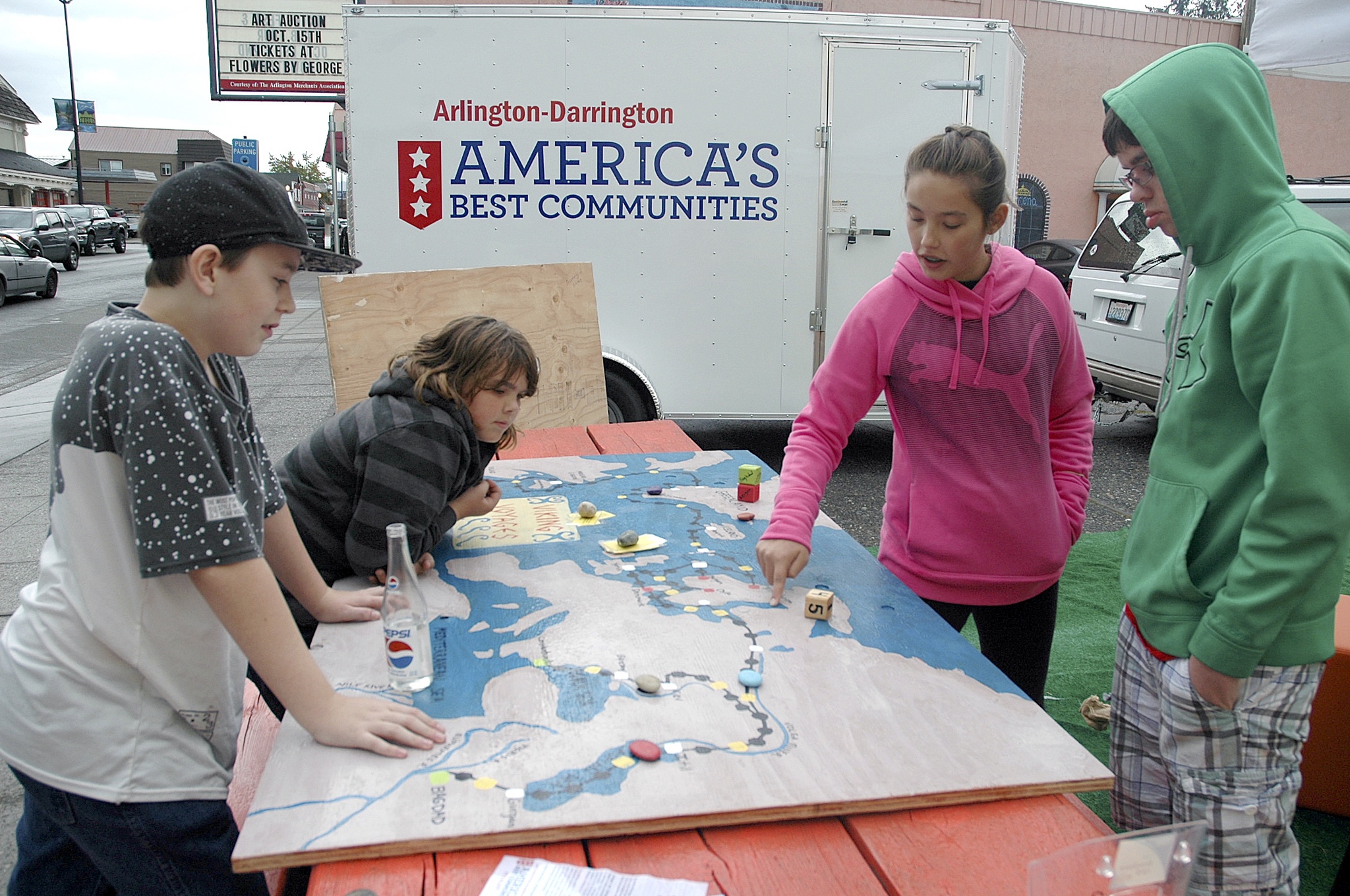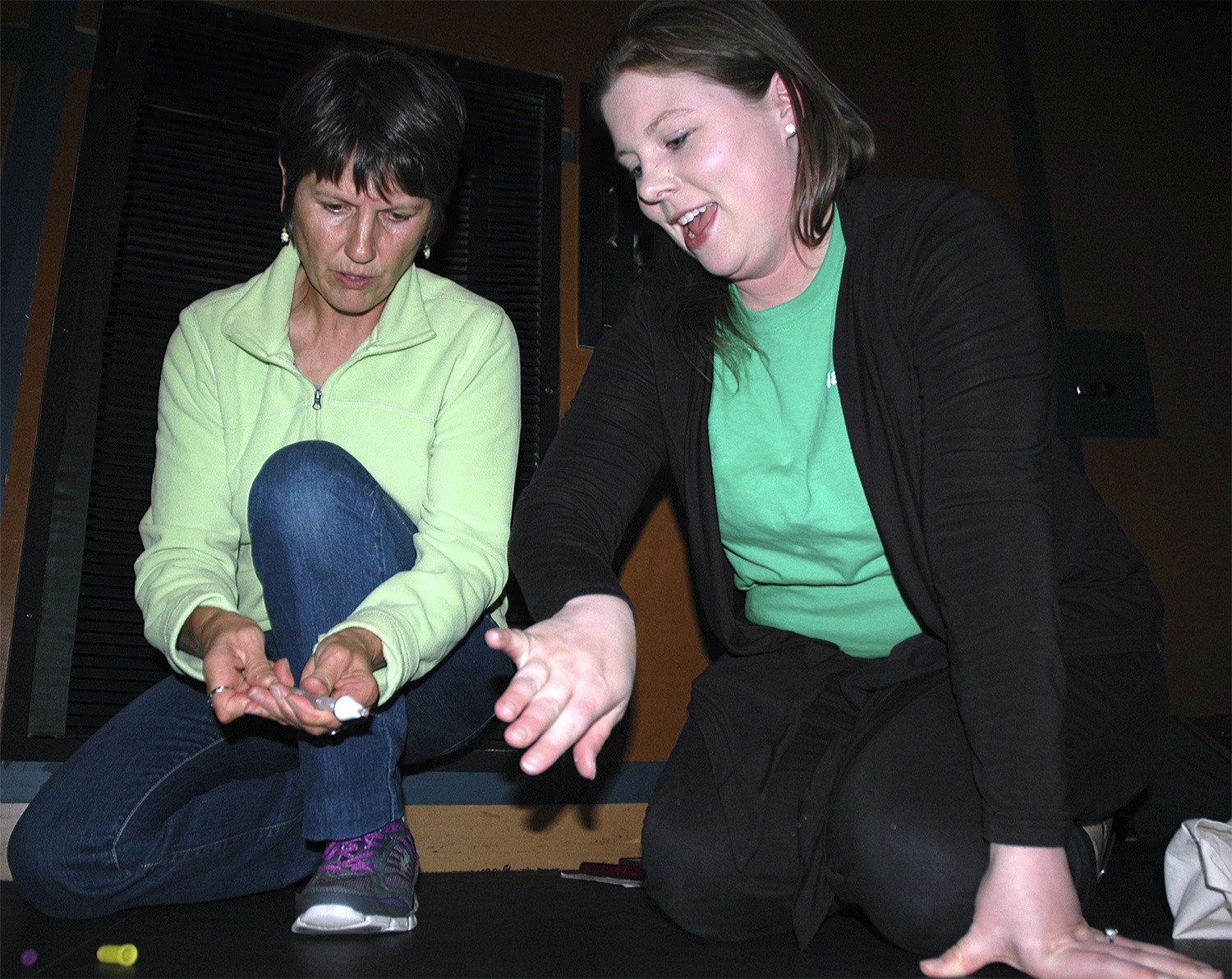ARLINGTON — The official death toll of the landslide in Oso on Saturday, March 22, stood at eight, as county and federal officials addressed the news media outside the Emergency Operations Center in the Arlington Police Station and City Council Chambers on the morning of Monday, March 24.
Snohomish County Fire District 21 Chief Travis Hots noted that search and rescue crews faced the challenges of darkness and of uneven, unstable terrain in their evening search on Sunday, March 23, but he pledged that the already considerable resources provided by the city and state would be met with more, from the local on up through the federal levels. Hots promised that aircraft, search and rescue teams, search dogs and technical rescue teams would be brought to bear on March 24.
John Pennington, director of the Snohomish County Department of Emergency Management, explained that authorities have compiled a list of 108 reports, of names of individuals who are either unaccounted for or missing, after working to consolidate several separate sets of reports from various entities and sources.
“This doesn’t mean that there are 108 injuries, or 108 fatalities,” Pennington said. “It’s 108 reports. We have 108 individual names, or individual identities. It’s a soft 108.”
Pennington elaborated that the Snohomish County Call Center number of 425-388-5088, that’s been devoted to providing shelter and evacuation information, has been repurposed to receive reports of the missing and unaccounted for. While the Call Center cannot release those reports to the public, it will disseminate that information to the appropriate agencies.
“If you have already reported in to 425-388-5088, that Call Center number, about a loved one, you’re good to go,” Pennington said. “We have that information. If you’ve not, if you’ve reported out to some other entity, if you’ve put it on a website yourself, that’s okay, we understand, but we need to build this database in-house and start pulling these pieces together more effectively, for all of us.”
When those people call 425-388-5088 about a missing or unaccounted for person, Pennington asks that they be able to answer the following questions:
• Was that individual a property owner or a tenant of the Oso area?
• Why was that individual in that particular area?
• Do you know their last known location?
• When was the last time you heard from that individual?
• Does he or she have friends in the area who could have been visiting?
• Do you know their phone number?
• Do you have a description of them?
Pennington also encouraged those who have been impacted and/or displaced by the landslide to contact that same Call Center number, to let the authorities know that they’re safe.
Pennington pointed out that responding agencies have not only had to determine which structures were impacted and to what extent they were occupied, but they’ve also had to factor in how this situation might have been affected by the landslide taking place on a Saturday.
“A lot of these individuals probably would have been gone, away from their homes, to work, but it was Saturday morning and they were home,” said Pennington, who also confirmed that certain contractors and construction workers were in those neighborhoods, in addition to the traffic passing by on State Route 530. “Part of the challenge we face is whether or not the homes were occupied full-time or vacation homes, but what we do know is that it was Saturday, and it was probably a higher number than you would see during a weekday.”
Of the property that was impacted by the landslide, 59 lots were vacant, while 49 parcels had some form of structure on them. Of those 49, 35 had built homes, 13 had manufactured homes (including RVs) and one had a cabin. Also of those 49, 25 are believed to have been occupied full-time, while 10 were occupied part-time or vacation homes, and the occupancy status of the remaining 14 is unknown at this time.
Pennington closed his initial remarks by praising the Darrington community for having prepared for a long time for a disaster of this nature, and by reassuring them that the Department of Emergency Management and other entities, including Frontier Communications, are working to counteract the town’s current isolation, in part through a freer flow of information.
“We will use every federal resource available to help support Snohomish County, the city of Darrington, the community of Oso and the individual families who have been affected by this,” U.S. Sen. Maria Cantwell said. “Our hearts go out to these individual families who have missing loved ones or who have been greatly impacted by this event.”
Cantwell cited the support of agencies ranging from the American Red Cross and FEMA to the U.S. Department of Transportation, before she thanked not only Pennington and Hots, but also Snohomish County Executive John Lovick, Arlington Mayor Barbara Tolbert and the first responders for the roles they’ve played in dealing with this disaster.
“The bad news is that the water continues to rise, and homes are inundated up to their eaves, in many cases,” said Pennington, who estimated that seven homes have been flooded so far, but agreed with Snohomish County Public Works Director Steve Thompson that the good news is that the waters are rising slowly.
Although a similar landslide struck that same area in 2006, Pennington asserted that the latest landslide was completely unforeseen.
“This came out of nowhere, with no warning,” Pennington said. “The Tulalip Tribes and others mitigated that area very well. It was considered very safe. Very candidly, I just don’t think anyone foresaw this portion of the slide.”
“The slide debris that’s laying in the bottom of the river, it’s about a mile long, probably a thousand feet wide, probably I’d estimate 15 million cubic yards of material,” Thompson said. “It’s massive. It’s the biggest thing I’ve seen in the 30 years I’ve been working in this area.”
As of the afternoon of March 23, the North Fork of the Stillaguamish River had carved out a new channel, around the landslide, that connected with the former river channel.
“That’s good news,” Thompson said. “It’s doing what we expected it to do. Hydrologists are watching the river gauge, and it’s slowly coming up.”
Indeed, according to Thompson, the downstream river levels are nearly back to normal, although there remains a reservoir of water upstream of the landslide.
“We had reports this morning from our field staff that, at about 2 o’clock, it was starting to slowly stabilize and drop upstream,” Thompson said on March 24. “That’s good news, because it’s kind of a semi-slow, predictable release. We’re hoping it continues, and that channel-cutting keeps working upstream and releasing more of that pressure.”
Thompson deemed the dewatering of the area upstream of the landslide to be useful to Department of Transportation crews working on State Route 530. Even then, however, he sounded a note of caution, warning that heavy equipment could fare poorly in the light, loose, super-saturated terrain. He added that crews have been posted at the five bridges downstream of the landslide, to spot any debris or human remains.
“We’re still in a rescue mode at this time,” Hots said. “The situation is very grim. We’re still holding out hope that we’re going to be able to find people who may still be alive, but keep in mind, we have not found anybody alive on this pile since Saturday, in the initial stages of our operation.”
As of the afternoon of March 24, Shari Ireton, director of communications for the Snohomish County Sheriff’s Office, reported that some ground rescue crews were pulled from the area, due to concerns about the potential of additional landslide activity at the site. Geologists are surveying the scene to assess any risk.
Ground rescue crews are approaching the landslide area from both the east and west sides, in an attempt to locate additional victims, and there are at least 100 responders active on the ground at last count.
Ireton reminded the public that only residents and first responders have access to the area above Trafton, while other members of the public and the media are not being allowed into that area, due to continued concerns about safety.







